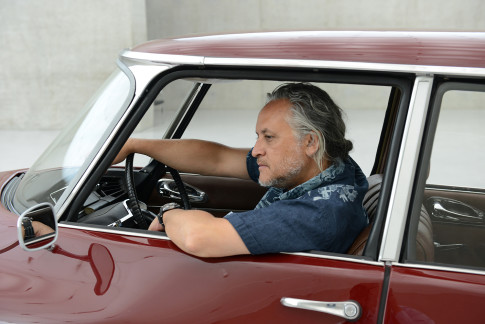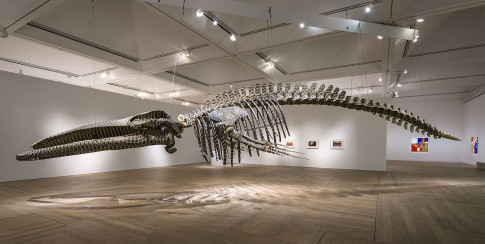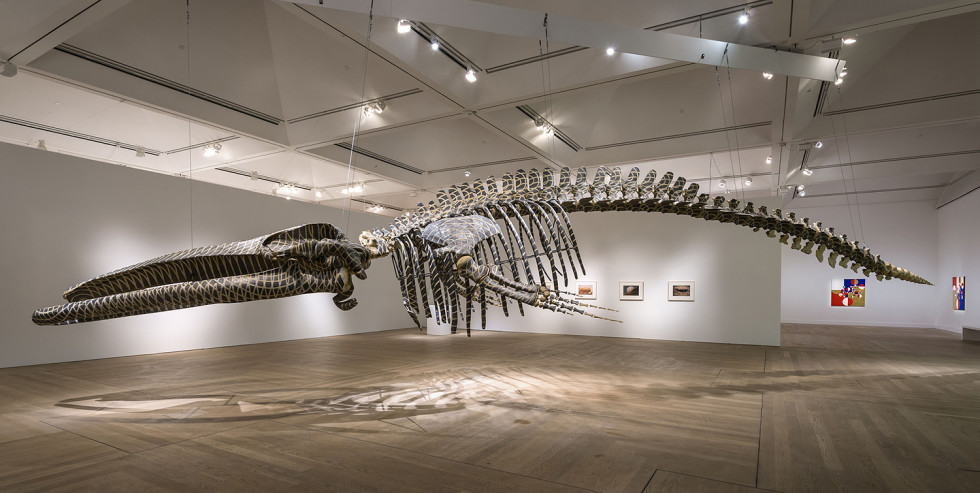
Gabriel Orozco, Dark Wave, 2006 © Gabriel Orozco and Kunsthaus Bregenz. Courtesy of the artist and Marian Goodman Gallery, New York. Photo: Åsa Lundén/Moderna Museet
About some works in the exhibition
Black Kites
Orozco worked on Black Kites (1997) during a period when he was convalescing at home after a serious illness. The act of methodically drawing a chequered pattern on a real skull was an intense experience, says Orozco, who carried out this painstaking process very slowly. The time he spent with the skull, the remains of a living human being, was central to the piece. Much of Orozco’s oeuvre is about time itself, and in this work, the transience of life is especially tangible. The skull is a classical motif in art history, a reminder of our mortality, and Black Kites is like a distillation of life’s great issues. The abstract, artificial pattern adorning the entire uneven surface of the cranium contrasts sharply with the organic vulnerability and temporality that the skull emanates. Concerning the skull as a ready-made, Orozco has humorously commented that it is “the ready-born, the ready-dead”.
Dark Wave
When Orozco’s nearly 15-metre long reconstruction of a whale skeleton, made of calcium carbonate and resin, was first shown in London nearly seven years ago, it caused a great commotion. A stranded whale off the south-west coast of Spain inspired this sculpture. The artificial skeleton is covered with an intricate geometric graphite pattern based on the way circles spread on the surface of water. In this way, the artist creates a dialogue between art and the whale’s naturally-determined, animal aura. This work distinctly highlights Orozco’s fascination with traditional customs, rites and cultures with close ties to nature. But it can also be interpreted as a ready-made, a key concept in modern art, and one which Orozco paradoxically revitalises by linking it to traditions in the distant past.
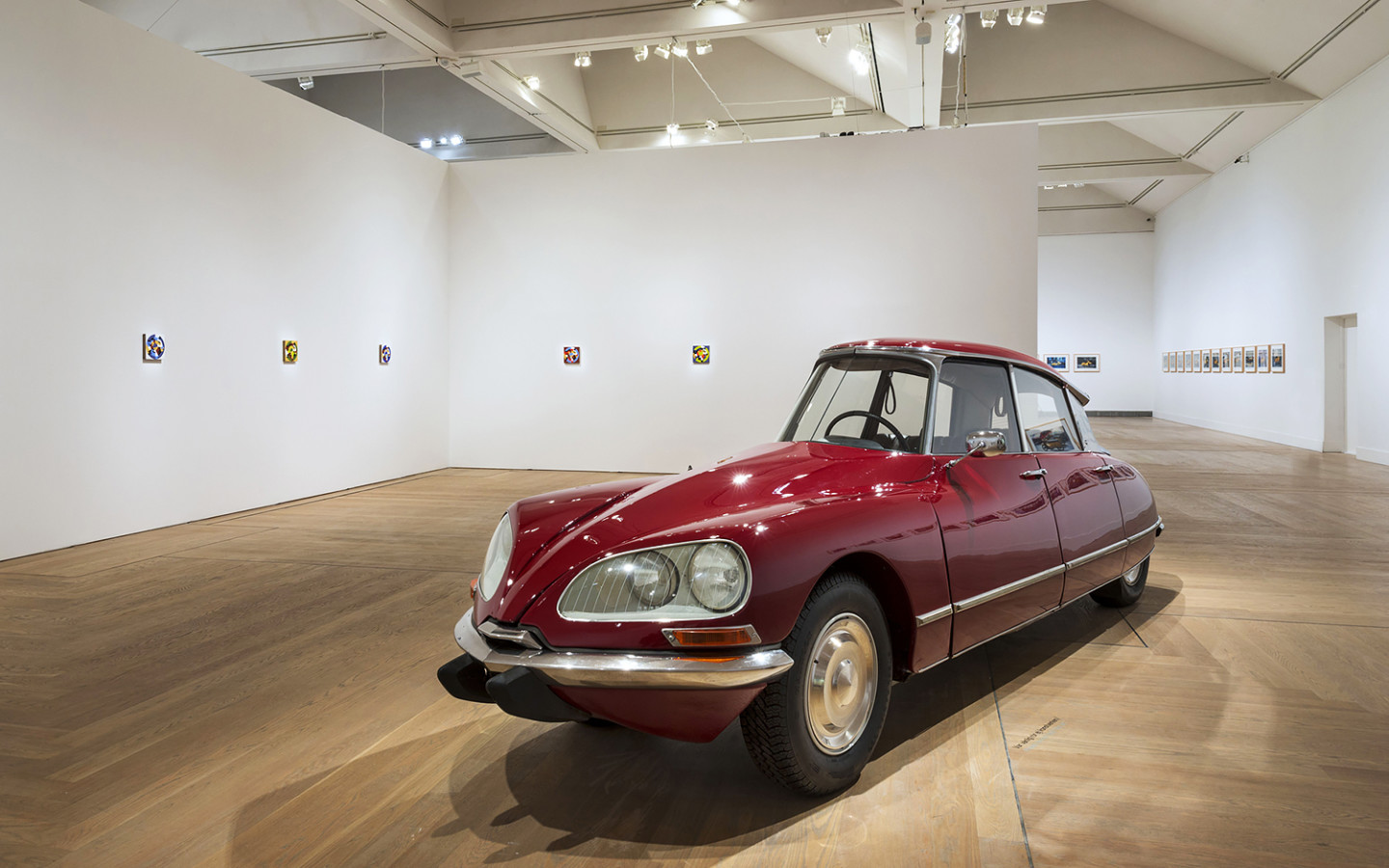
2014
La DS Cornaline
La DS Cornaline (2013) is a newly-made replica of a work from 1993. A deep red Citroën DS from the 1960s has been sliced lengthwise into three equal pieces. The middle section was removed, and the outer parts joined up, to form a more streamlined, dynamic form, but with no engine to propel it. Gabriel Orozco has always been fascinated by speed and racing. As a child, he believed that ordinary cars would automatically move as fast as racing cars if they were made thinner, simply by looking more aerodynamic. In La DS, the artist has made this fantasy come true. Sitting in the narrow driver’s compartment evokes a sense of speed. Orozco frequently takes familiar objects and makes us experience them in new ways by various kinds of changes, giving us new perspectives on the objects around us.
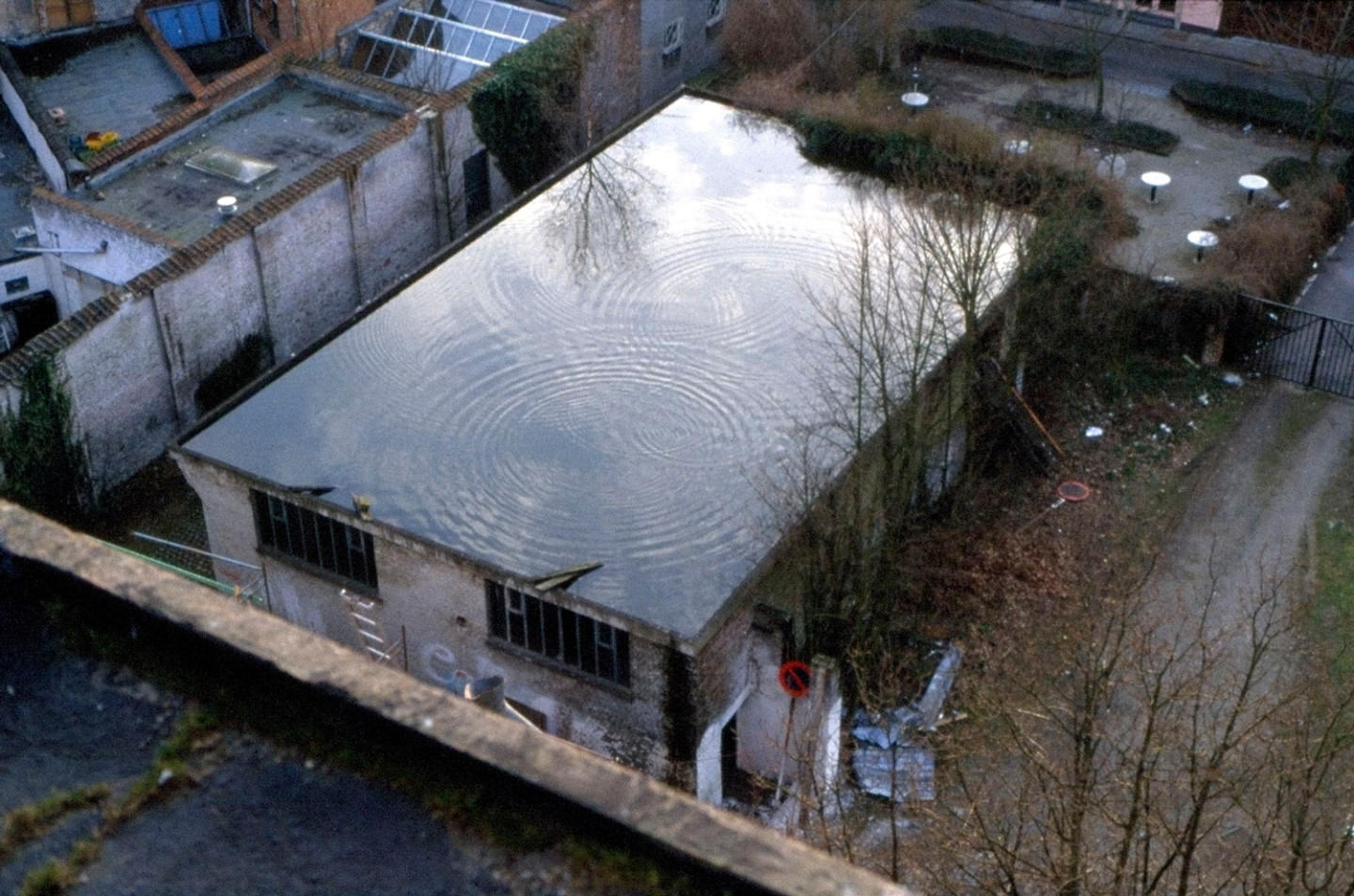
Marian Goodman Gallery, New York.
Photographs
Orozco often leaves the studio, in favour of alternative creative techniques that he can explore while travelling. Photography is one of these nomadic practices, ready-mades is another. These two approaches often overlap, for instance in his photographic documentation of readymades. As a photographer, Orozco lets the camera document his personal relationship to the objects he finds: “When I cycle through puddles on my bicycle, I am alone. When I place my breath on a piano, I am alone. I do not have an audience. The photo is a witness of this intimacy.” Several of Orozco’s photos capture something that is developing or disintegrating, be it circles in the water on a rooftop, or breath evaporating from a piano. With photography, Orozco gives permanence to nature’s transient movements and vestiges of dissolving life. The series Until You Find Another Yellow Schwalbe (1995) comprises 40 photographs of yellow motorcycles parked two by two. Orozco had a yellow Schwalbe motorcycle when he was living in Berlin. There were many like his in the city. Finding them was a way of getting to know the city as a system. When he found a yellow Schwalbe, he parked his own next to it and took a picture.
Cobblestones
These river stones have been polished into roundness by nature. Orozco found them stacked for sale on roadside cliffs along the Guerrero coast in Mexico. He made a drawing on each of the stones, in an attempt to express their individual character. A local stonemason then carved the artist’s drawings into the stones. When Orozco got them back, he added a new layer of drawing to them, to enhance other aspects and observations. This procedure was repeated some five times on each stone, resulting in sculptures with shapes derived from rotation, circulation, mobility, cyclicity and erosion – themes that Orozco revisits again and again. But they also suggest modernist sculpture by artists such as Constantin Brancusi and Hans Arp, fossils and ritual objects.
Terracottas
Orozco describes his work with clay as a physical and sensual experience, a kind of communion with the clay. The shapes are made by modelling the wet clay with fingers, hands, forearms and a wooden ball against a flat tabletop. Orozco uses his body as a mechanical tool and sets systems and rules for how the objects should be made. Once he has found a way he likes for processing the clay, he repeats the procedure many times. Therefore, the objects naturally form different groups. But clay objects are unpredictable by virtue of being clay. They can crack when being fired, and clay doesn’t always behave as expected. Nor is its colour consistent. These handmade objects resemble body fragments and petrified creatures of unknown origin. The clay sculptures can be seen in a context of cause and effect, but they also allude to how a globalised cultural economy affects our understanding and experience of the objects around us, as any relationship between production and use has largely been lost.
Paintings
“Abstraction is one of the great inventions of art in the 20th century,” says Orozco, “or the fact that you can just be in front of this white space and start to create without any reference to reality. But there is always a reference to reality, I think. ’Cause we are real and that is real,” he continues. Gabriel Orozco’s abstract paintings are constructed according to certain rules. He sets limitations on size, colour and basic composition, and then goes on to explore the possibilities within the rules he has defined, creating a multitude of variations. He frequently uses a computer to calculate the possible compositions before painting the canvasses by hand. His rules do not prohibit him from adding new parameters to the system along the way, such as using a new colour or a new format for the surface of the work. “[By]establishing some rules – I could build up a structure that behaves like a sculpture,” says Orozco, “it’s a flat mobile maybe, or it’s a diagram that is rotating.”
New works in the Collection
In connection with this exhibition, Moderna Museet has acquired three works on paper and two paintings on acetate by Gabriel Orozco. A number of circles are positioned on the transparent plastic. The matt paint contrasts with the glossy surface. The painted circles are full of cracks and imperfections, like flawed elements in their nondescript space. The paintings can be hung like flags or mounted against a wall so that the circles cast shadows. Placed in aluminium frames in the middle of the room, they seem to capture the light. It is as though these works were made not to be seen but to be seen through, like drawings suspended in nothingness, rather than paintings. The two “glasses” are essential to understanding the artist’s process-oriented approach; they were created two decades ago, when he was studying Marcel Duchamp’s works, alongside the radically different artist Piet Mondrian. Like Duchamp, Orozco captures the moment between two states of mind, and is more interested in the act than in the object itself; and like Mondrian, he sets off horizontals and verticals, in a perpetual visual motion. Thus, two different visual registers co-exist.

